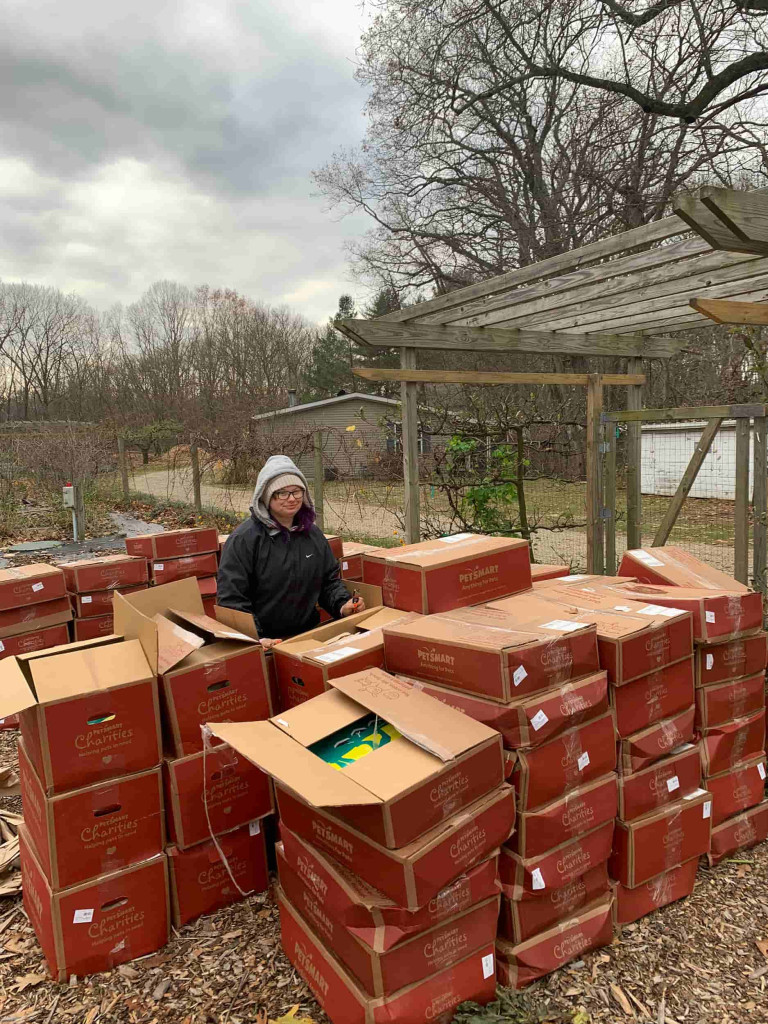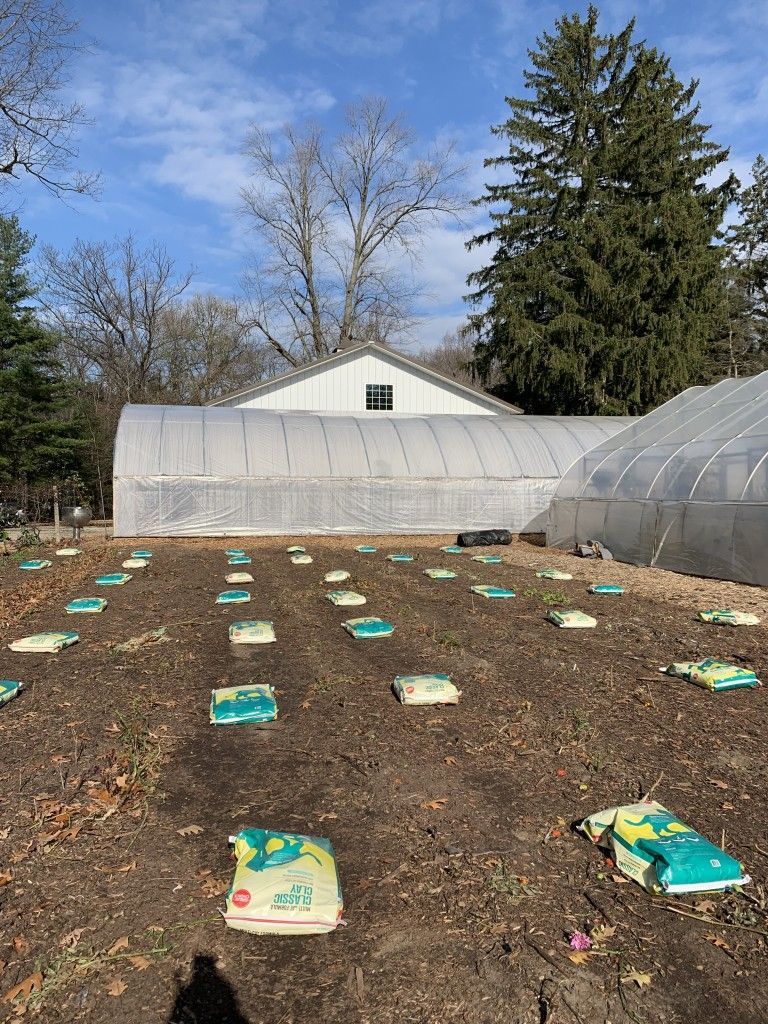After eleven growing seasons and many experiments, our property has changed a lot. However, there is one problem that we haven’t been able to fix quite yet: naturally sandy soil. This is to be expected considering that Lake Michigan is less than a mile away, but it does make growing organic food considerable more difficult. Ideal soil is “loamy”, which means it retains moisture while still draining as needed. This type of soil is composed of clay, sand, and organic matter. Yet even after years of adding organic fertilizers and healthy compost, the soil samples we send to Neal Kinsey agricultural services read in at 95% sand.
As put by Eliot Coleman in “The Winter Harvest Handbook”, the content of soil matters because healthy soil propagates healthy plants. When the soil is balanced, it makes it easier for our bodies to digest and access the nutrients we need from our food. After reading Coleman’s book, Julie had a eureka moment. We needed clay in order to create that perfect “loamy” soil mentioned earlier. Doing so would save our soil from becoming hydrophobic in the heat of summer, reducing the stress on our plants. This would protect them from disease and pests, leading to more nutritious food for both our guests and us.
Determined to save our poor zukes and cukes from another season of destruction by squash bugs, we started asking around for clay. But where do you buy pure clay that doesn’t come in giant, immovable clumps? The solution came from an unexpected source. It turns out that some unscented kitty litter is composed solely of Bentonite clay, which is exactly what we needed. The resulting scene on the farm has been quite entertaining, as we’ve been mass ordering bags of kitty litter from surrounding stores to slowly work them into the farm.

Goldberry’s resident cats, Fluffy and Mini, are very happy about this development, but we can only imagine what the delivery men are thinking when they pack up our orders. One particular FedEx man walked into the Inn LITERALLY scratching his head asking where we wanted our 92 boxes of kitty litter, as if we might have a pride of lions somewhere. Our hope is that the plants will be just as excited as our cats when they awake in the spring. The goal is to maintain more moisture and nutrients, especially around the plants in our perennial beds and areas that aren’t as regularly watered.
Additionally, we felt that it was important to take the roof off the hoop house for the winter to expose the soil. As it hasn’t precipitated in there for 8 years, we thought it might help with disease and pest management by washing out any excessive salt. We also added mounds of earthy goodness from our compost pile, which contains food scraps that our chickens won’t eat, weeds, and leaves. Such organic material needs to break down before it returns to our soil so that its nutrients can be absorbed by future plants.
To fully support the health of our plants we also started creating individualized care plans. For example, we bought a ton of peat for our blueberries, which prefer a boggy, acidic soil. We’ve always dreamed of a secret garden labyrinth, but these poor scorched bushes have never exceeded chest height. We’ve also noticed that the brassicas are giant nutrient hogs that need to be netted to prevent the cabbage butterflies from laying their icky eggs. On the other hand, the carrots get hairy with too much fertilizer. But we’ve never even gotten to this step because our carrots keep branching into forms that resemble abstract sculptures. We believe this problem will also be solved through soil adjustments.
Just like anything else in life, gardening requires balance. Every plant prefers different growing climates. However, creating a balanced soil can help alleviate some of these differing preferences. That said, we are excited to see how the changes we’ve made will impact the fruits of our labor in the coming season. Follow along to see how our farm is changing on instagram! If you want to see the action in person, please book your stay on our website. And if you have any questions about soil, Julie is happy to go on for hours about the intricacies of gardening.
~Sydney Moore

